You know, if someone had told me back in the sixties while living in Red Hook that the very person responsible for my crossing the highway to avoid the dangerous Hamilton Ave footbridge to get to the other side of the BQE, was actually the same person who gave us all a once-in-a-lifetime and now defunct attraction of all attractions – The 1964 World’s Fair – I would have said, “Get outta here. No friggiin’ way!”
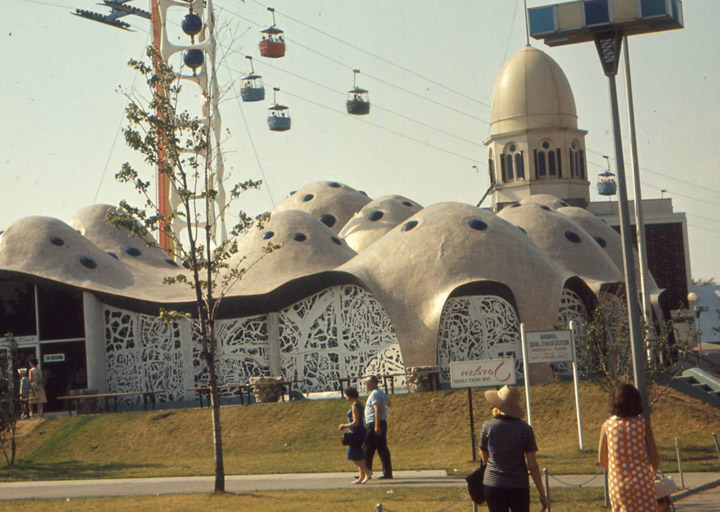
But no one ever did tell me that, not until a few years ago, anyway. I was shocked that Robert Moses was the driving force behind the final staging of the 1964 /1965 World’s Fair. It was Wikipedia who outlined the whole saga for me and provided all the horrid details of Robert Moses’ hand in pushing for the event, despite the Bureau of International Exposition’s rejection of the proposal. The reason? Quite simply, and quite fairly, I might add, sanctions were already given to Seattle for a 1962 World’s Fair, and their rules permitted only one country that place of honor in a ten-year period. That apparently did not sit well with Mr. Moses who, according to Wikipedia, was accustomed to having his own way in New York. (You think?)
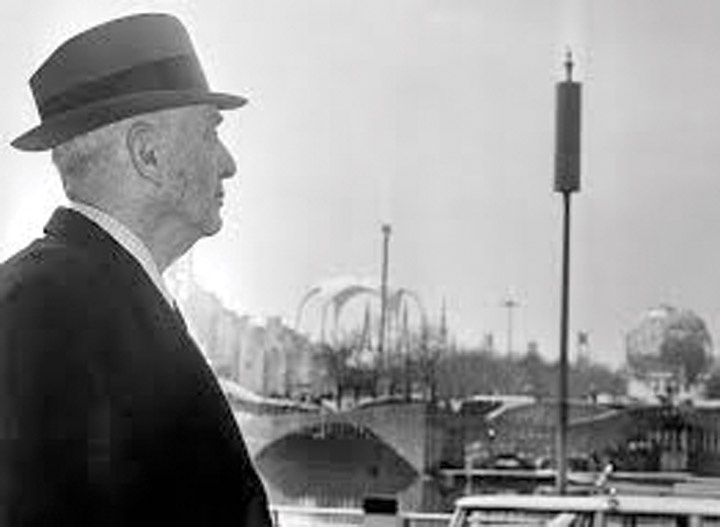
So, he turned to the media for alliance purposes, and pretty much pissed off the haughty BIE, headquartered in Paris, who, in turn, instructed their roughly 40 or so members at that time, not to participate in the Fair. Hence, the ensuing explanation as to why lesser profiled countries like Indonesia, Malaysia and Guinea were represented, and not countries like Australia, Germany or the United Kingdom, who were more the heavyweights in the 1939 Fair. It was also a crucial reason why the emphasis on American corporations and industry took center stage as well. In the end, rising above his opposition, Mr. Moses boasted quite confidently to the media following his progress that he didn’t need the BIE sanctions, he had Michelangelo and Walt Disney as the stars of his Fair. And while he didn’t achieve the financial success he had hoped for, to his credit, Michelangelo’s, The Pieta, was definitely his crown jewel. It was the most sought after and attended pavilion during its two-year exhibition life.
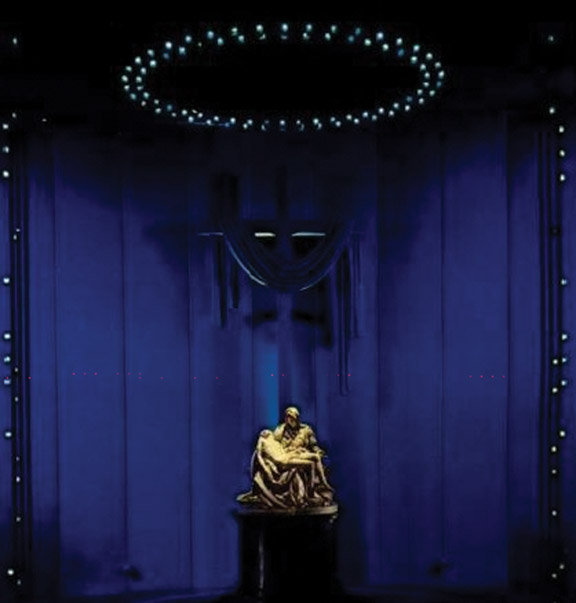
The Pieta.
What could one say about its presence in the United States, right in our own backyards – Queens – sitting just acres away from the newly built Shea Stadium. Never before had such an iconic and sacred piece been transported from Vatican City across the ocean for an exhibit. And never before had we, Italian Americans, been so proud to have it in our city. As the saint-worshiping, church-going religious lot that we were, it boosted our egos and polished our pride to a glimmering sheen. And among all the saints that were worshiped by Italians and Italian Americans, Red Hook’s Molese population took special favor with our adoration of the Blessed Virgin Mary whom we revered through our own patron saint, the Addorolata – the Mother of Jesus portrayed as our Lady of Sorrows. And to my family in particular, The Pieta, held even more symbolic significance because we bore the name – Pietanza. One couldn’t imagine the honor we felt knowing that our family name held such esteem in the world.
When we were kids and had originally asked our father what our name meant, he explained that it meant pity or sympathy. “Oh,” we thought, somewhat disappointedly. Were it not for Michelangelo’s masterpiece, we would have otherwise felt a little, pardon the pun, pathetic that we bore such a depressing translation for a surname. But thankfully, our father explained on the flip side, our name also held the culinary endearment for what Americans know as appetizers. That intrigued us more. How appealing to think that our name was associated with the stimulating effects of one’s desire to enjoy an entire meal! Usually the best part, no? (Especially at weddings.) And, yes, flirting did conjure up some “appetizing” pick-up lines. Later in our lives when we visited Italy, and dined in fancy trattorias, we would open menus to find our name proudly heading a list of mouth-watering appetizers. More recently still, when my own daughter went to college and took Italian, her “professoressa” shared with her class that the word Pietanza, in Italy, was thought to be synonymous with The Last Supper. A fitting finale, I suppose.
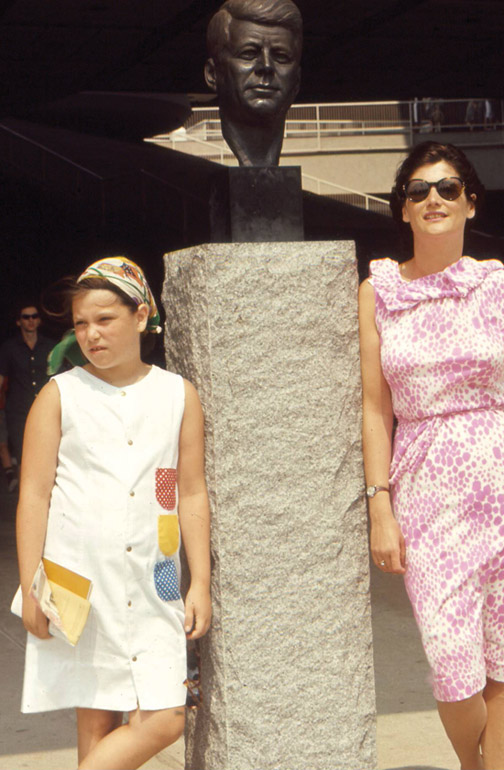
Back on task, however, the Fair, as I remember it, despite only being in our neighboring borough, seemed like a hike to get to. Located at the western most part of Brooklyn, Red Hook’s transportation route required a bus and train, if not two, to get there. Though I don’t remember it, it was said that the IRT division was equipped with additional cars that were made especially for the Fair that were painted orange, blue and white (the official colors of the Fair) and had larger viewing windows to take in the skyline of the monumental Unisphere and the surrounding pavilions as one traveled along the elevated train to its Willets Point Station. I do recall, however, climbing down the outdoor stairwell of the train station and walking towards that enormous globe as the oversized, international walkway flags vigorously waved and flapped in windy manifestation. The fountain streams weren’t so shy either.
What I could remember of all the sites we visited, and there were many with long lines to tolerate, were the Futurama, GE and Westinghouse Pavilions and, of course, The Pieta. “It’s a Small World”, a song that was part of Disney’s Unicef entertainment world of children’s songs and dances in the Pepsi Pavilion, was a jingle I imagine most baby boomers could, to this day, still remember all the lyrics to. That’s how catchy it was and still remains.
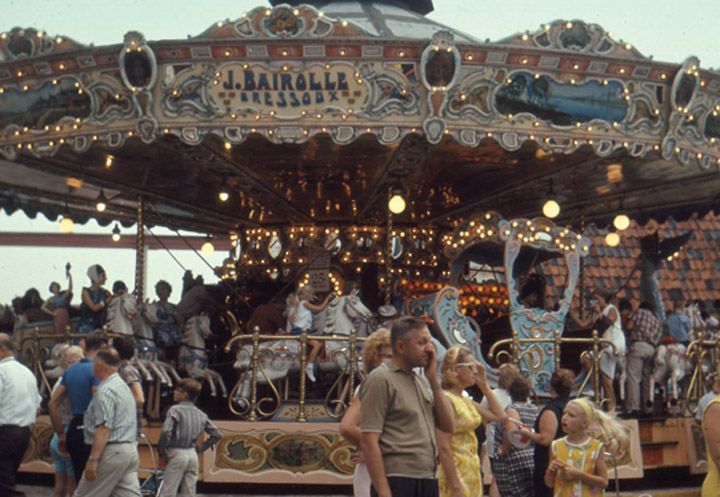
The Belgian Waffle was, thankfully, a treat that was served up at the World’s Fair for all to enjoy and I think many kids and teens at that time would swear they ate nothing like it in their lives, or have ever since. It was not something that could easily be duplicated on their taste buds is what most believed. I’ve heard stories where kids would try to sneak onto the Fair grounds and use the one dollar they saved by not paying admission, to buy their waffle! (Truthfully, I can’t recall having one, but admittedly, I can’t picture my sweet-toothed mother not buying it for us.)
I only recall going to the World’s Fair on one, maybe two occasions. But many from the neighborhood have said they went weekly, or some went on field trips with their schools, and some even went to participate in the events. My brother went with his friends. There were a bunch of neighborhood guys that used to hang out on Henry Street at a local candy store. They would meet up and go together. They knew of a fence that they could sneak in through alongside the Grand Central Parkway. They particularly gallivanted around the international grounds and sampled the different cultural foods. They recalled some of the pavilion’s attraction rides, and in their teenage rebel-rousing zeal, rocked one of the cars so hard that it jumped the track. Of course, they were asked to leave, and as they put it, “We were always asked to leave wherever we went, but we always had fun!”
I was just a decade old at the time of the ‘64 World’s Fair and only a few things made a delible impression on me. Undoubtedly, The Pieta was the highest among them. Aside from the whole namesake thing, and don’t get me wrong, the statue itself was magnificent, but for some reason it was not that work of art that impressed me the most. It was the rich, midnight-blue backdrop that caught the attention of my ten-year-old eyes and held it there, hopelessly transfixed, while that color worked its magic inside my head. That velvety sapphire-hued fabric, draped unmoving and ever so elegantly behind a broken-hearted mother and her dead son, seemed to encompass my thoughts more so than the empathy of the centerpiece it was designed to highlight and evoke from its audience. It stirred feelings of comfort within me that was unspeakable, unexplainable to me as a little girl. Even the moving walkways providing different views from different heights did not make quite an impact on me. I was clueless back then, having never before seen that royal-colored night time blue while living in the city whereonly a black starless sky covered my brightly-lit Red Hook world with tunnel and highway lights.
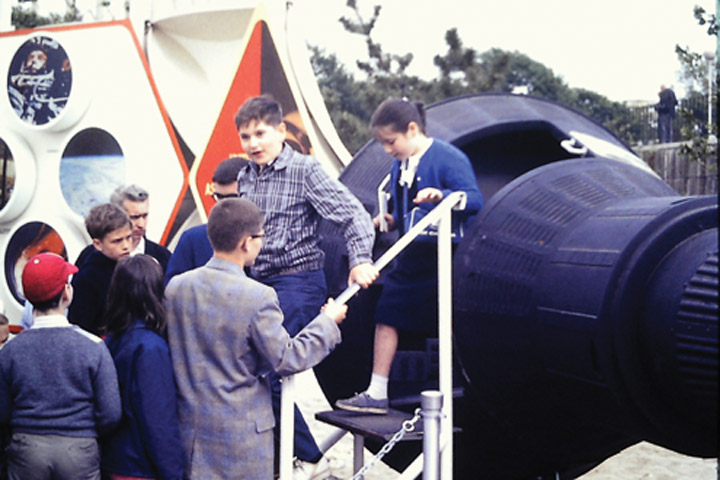
It was as if that color and I were predestined to meet at the Fair because in the years to follow, it marked a series of life-changing events in my life. It was that color I felt drawn to in my Catholic grammar school class where a talented teacher drew a blackboard-sized chalk drawing of the Virgin Mary cloaked in a lighter shade of that midnight blue. I felt that same fixation and knew instantly I wanted to draw and paint, too, which I eventually went on to do. It was that color that I came to know as lapsi lazuli in the Frick Collection on Fifth Ave, where on an early date with my then husband-to-be and I felt so connected with our mutual love of a lapsi lazuli-topped end table. And it is that same hypnotic sapphire hue that I stare up into at St. Stephen’s Church as the star-studded sky hanging above the Presepio where my husband proposed to me one Christmas Eve. It even cunningly accents my home in European style as a reminder to me that I am consoled by its presence.
I wish I could say after all this sentiment, that I have long since let bygones be bygones when it comes to Robert Moses, but sadly, I harbor a grudge still. In fact, it was a topic of conversation when I met with a student who was doing her dissertation on Red Hook. She was intrigued with the amount of energy we Red Hookers/Carroll Gardeners put into “the split” by the expressway. “It didn’t just happen to Red Hook, you know.” she pointed out. Well, yes, that may very well be true, but we could only measure our own discontentment, not others’. And, yes, we did have an incredible, memorable World’s Fair, but the truth is Robert Moses had his own agenda for that, too.








